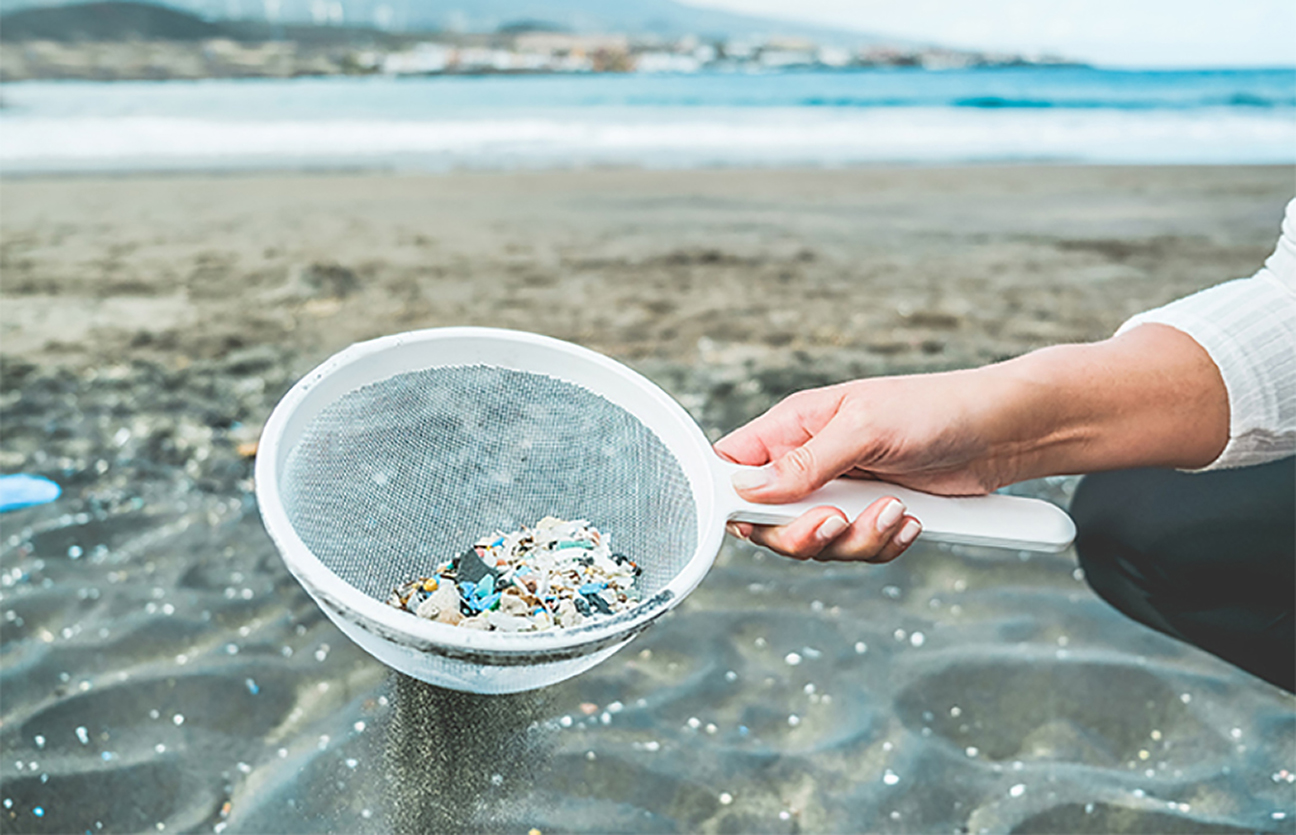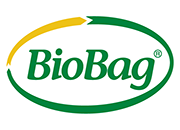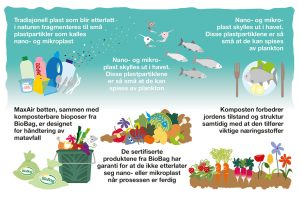Microplastics are everywhere – but what are the consequences?
Posted on February 1, 2022 at 4:13 pm

Microplastics are increasingly found in the natural world, and while it is not yet certain what the consequence of the tiny pieces of plastic will be, there is no doubt that this is a growing issue. In fact, scientists see microplastics as one of the biggest environmental challenges for both humans and nature[1].
What is the impact of microplastics on our health?
The small pieces of plastic cannot be directly seen with the naked eye, but they are found in everything from the world’s oceans, in nature and in some of the foods we consume, such as honey and beer.[2]
A study by Lund University in Sweden has shown that nanoplastics, which are even smaller pieces of plastic than microplastics, have a negative impact on fish. The study fed fish plankton that had eaten nanoplastics and showed that this has unpleasant consequences for the fish: They were brain damaged. [3]
However, the impact of microplastics on our health has not yet been scientifically proven, but it does indicate that the tiny pieces of plastic that can be found everywhere can have more harmful consequences than we realize at this time. A recent study published in the journal, Environmental Science and Technology [4], concludes that an average person eats approx. 50,000 particles of microplastics a year and breathes in about the same amount. The harm caused to humans by inhaling microplastics is not yet known. But experts say [5] that the particularly harmful aspect of microplastics is that they can carry other airborne pollutants into our lungs and blood streams. These microplastic particles can cause cardiovascular disease, cancer and affect the immune and nervous systems.
We must all make an effort to minimize plastic in nature
The most obvious action is, of course, to not throw plastic away in the countryside, but there are also other ways to avoid both plastic and microplastic pollution. We can think about minimizing the use of unnecessary plastics such as straws, shopping bags, cosmetics with plastic bits and water bottles, etc. At the same time, we must replace traditional plastic products with more environmentally friendly products where appropriate. More and more municipalities are sorting organic waste from residents’ kitchens, and it makes sense to use a compostable bio bag that will degrade along with the bio waste. This also prevents residues from the traditional plastic waste bag from being included in the compost formed from the food waste that is used on agricultural land. The use of compostable bio-bags also reduces the risk of microplastics in the bio residue from the biogas facilities.
Biodegradable waste bags without microplastics
The compostable waste bags made by BioBag are made of biodegradable plastic, which means that the bio-bags completely degrade and do not leave microplastics in nature. The compostable waste bags are therefore not only very suitable for organic waste sorting, they are also a good alternative to conventional plastic bags which can cause plastic pollution.[6]
[1] Source: A magazine, 08 December 2017, Viten Mikroplast https://www.aftenposten.no/amagasinet/i/79dLv/Dette-er-en-av-de-storste-utfordringene-mennesket-har-statt-overfor
[2] Source: https://www.dr.dk/nyheder/viden/naturvidenskab/der-er-mikroplast-overalt-i-vores-omgivelser
[3] Source: https://www.nrk.no/viten/nanoplast-kan-gi-fisk-hjerneskade-1.13835804
[4] Source: https://videnskab.dk/en/node/30377?fbclid=IwAR1vskXxN2EKalTz7HF6UXolufd5blhZTaIcZHOlB3AeZgxAK42rNTlod-E
[5] Source: https://www.weforum.org/agenda/2018/06/microplastic-pollution-in-air-pollutes-our-lungs
[6] Source: https://www.altinget.dk/miljoe/artikel/biobag-chef-groenne-affaldsposer-er-lige-saa-groenne-som-de-ser-ud


No comments yet. If you want you can add one!
By submitting a comment you grant BioBag a perpetual license to reproduce your words and name/web site in attribution. Inappropriate and irrelevant comments will be removed at an admin’s discretion. Your email is used for verification purposes only, it will never be shared.